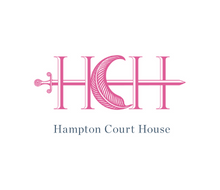
Hampton is a suburb of Greater London on the north bank of the River Thames, in the London Borough of Richmond upon Thames, England, and the historic county of Middlesex. Hampton is bounded by Bushy Park to the east, the suburbs of Hampton Hill and Fulwell to the north, green belt to the west, and the Thames to the south.
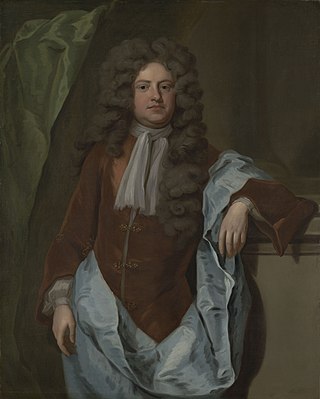
Charles Montagu, 1st Earl of Halifax, was an English statesman and poet. He was the grandson of the 1st Earl of Manchester and was eventually ennobled himself, first as Baron Halifax in 1700 and later as Earl of Halifax in 1714. As one of the three members of the so-called Whig Junto, Montagu played a major role in English politics under the reigns of King William III and Queen Anne. He served as Chancellor of the Exchequer from 1694 to 1699 and as First Lord of the Treasury from 1714 until his death the following year. He was also president of the Royal Society and a patron of the scientist Isaac Newton.
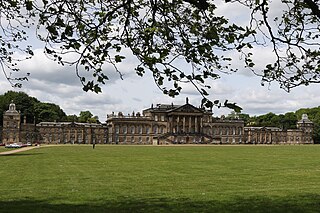
Wentworth Woodhouse is a Grade I listed country house in the village of Wentworth, in the Metropolitan Borough of Rotherham in South Yorkshire, England. It is currently owned by the Wentworth Woodhouse Preservation Trust. The building has more than 300 rooms, with 250,000 square feet (23,000 m2) of floorspace, including 124,600 square feet (11,580 m2) of living area. It covers an area of more than 2.5 acres (1.0 ha), and is surrounded by a 180-acre (73 ha) park, and an estate of 15,000 acres (6,100 ha).

Temple Newsam, is a Tudor-Jacobean house in Leeds, West Yorkshire, England, with grounds landscaped by Capability Brown. The house is a Grade I listed building, one of nine Leeds Museums and Galleries sites and part of the research group, Yorkshire Country House Partnership.

Bushy Park in the London Borough of Richmond upon Thames is the second largest of London's Royal Parks, at 445 hectares in area, after Richmond Park. The park, most of which is open to the public, is immediately north of Hampton Court Palace and Hampton Court Park and is a few minutes' walk from the west side of Kingston Bridge. It is surrounded by Teddington, Hampton, Hampton Hill and Hampton Wick and is mainly within the post towns of Hampton and Teddington, those of East Molesey and Kingston upon Thames taking the remainder.

George Montagu-Dunk, 2nd Earl of Halifax, was a British statesman of the Georgian era. Due to his success in extending commerce in the Americas, he became known as the "father of the colonies". President of the Board of Trade from 1748 to 1761, he aided the foundation of Nova Scotia, 1749, the capital Halifax being named after him. When Canada was ceded to the King of Great Britain by the King of France, following the Treaty of Paris of 1763, he restricted its boundaries and renamed it "Province of Quebec".

The Colne is a river and a tributary of the River Thames in England. Just over half its course is in south Hertfordshire. Downstream, it forms the boundary between Buckinghamshire and the London Borough of Hillingdon. The confluence with the River Thames is on the Staines reach at Staines-upon-Thames.

New Hall Manor is a medieval manor house, now used as a hotel, in Sutton Coldfield, West Midlands, England.

Hampton Court Park, also known as Home Park, is a walled royal park managed by the Historic Royal Palaces. The park lies between the gardens of Hampton Court Palace and Kingston upon Thames and Surbiton in south west London, England, mostly within the post town of East Molesey, but with its eastern extremity within the post town of Kingston. In 2014, part of the park was designated a biological Site of Special Scientific Interest. It takes up most of the final (lowest) meander of the non-tidal reaches of the River Thames and is mainly divided between a golf course, meadows interspersed with trees used for deer, seasonal horse grazing and wildlife. A corner of the park is used annually for the Hampton Court Flower Show and the part nearest to the palace has the Long Water — an early set of hydro-engineered ponds or lakes, fed by water from the distant River Colne, as are the bodies of water in the neighbouring park, Bushy Park.
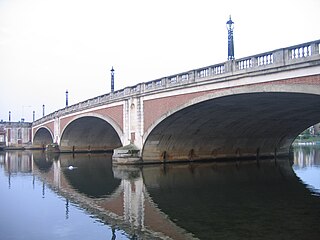
Hampton Court Bridge is a Grade II listed bridge that crosses the River Thames in England approximately north–south between Hampton, London and East Molesey, Surrey, carrying the A309. It is the upper of two road bridges on the reach above Teddington Lock and downstream of Molesey Lock.
George Montagu, 1st Earl of Halifax, of Horton, Northamptonshire, was a British politician who sat in the House of Commons from 1705 to 1715 when he became a peer.

Sir Danvers Osborn, 3rd Baronet served briefly in 1753 as colonial governor of New York Province. During the Jacobite rising of 1745, he had raised and commanded troops in support of King George II of Great Britain. Osborn later served as a Member of Parliament for Bedfordshire (1747–1753). In 1750, he traveled to Nova Scotia and was part of the Nova Scotia Council. He had a history of melancholia and committed suicide in New York shortly after he had taken office.

Hampton Hill is a district in the London Borough of Richmond upon Thames to the south of Twickenham. It is bounded by Fulwell and Twickenham Golf Courses to the northwest; a railway line road bridge at the junction of Wellington Road and Clonmel Road; a line southward just east of Wellington Road; Bushy Park to the southeast; and the artificial Longford River to the south and west. Hampton Hill is served by Fulwell railway station and Hampton railway station on the Shepperton to Waterloo line. It is part of what is collectively known as The Hamptons. Much of Hampton Hill High Street, and some neighbouring residential areas are designated as a conservation area.

The Longford River is an artificial waterway, a distributary designed to embellish a park, that diverts water 12 miles (19 km) from the River Colne at Longford near Colnbrook in England, to Bushy Park and Hampton Court Palace. Its main outlet is to the reach above Molesey Lock with lesser pond outlet channels to that above Teddington Lock. The waterway was built for King Charles I in 1638/39 as a water supply for Hampton Court. Water features in Bushy Park were added in 1710. North of the A30, its course has been diverted more than once as London Heathrow Airport has grown. Its cascades, grassed banks and fountains in Bushy Park were restored and reopened to the public in 2009 to close to their original state.

Bushy House is a Grade II* listed former residence of King William IV and Queen Adelaide in Teddington, London, which Lord Halifax had constructed for his own enjoyment on the site of a previous house Upper Lodge, Bushy Park, between 1714 and 1715.

Horton is a village and former civil parish, now in the parish of Hackleton, in the West Northamptonshire district, in the ceremonial county of Northamptonshire, England. The village manor, Horton Hall, now demolished, was home to the first governor of the Bank of England and William Parr, 1st Baron Parr of Horton. An outline of its former nucleus can be seen in neighbouring fields, by its grade II park and garden which features an ornamental bridge.
Sir Thomas Dunk was an English ironmonger and benefactor. He was appointed Sheriff of London in 1711, and served under Mayor of London Sir Richard Hoare.

The Diana Fountain in Bushy Park, in the London Borough of Richmond upon Thames, England, is a seventeenth-century statue ensemble and water feature in an eighteenth-century setting with a surrounding pool and mile long tree lined vistas which honors the Roman Goddess Diana. Originally created for Somerset House in the 1630s, and remodelled about 1690, the fountain has stood since 1713 in Bushy Park, and now forms a large traffic island in Chestnut Avenue.
Stud House is an early 18th-century house in the centre of Hampton Court Park near Hampton Court Palace. It is Grade II listed on the National Heritage List for England. It was traditionally the official residence of the Master of the Horse. The former stables at the house are separately listed, also at Grade II. The Stud House was built in the 18th century and was altered and expanded between 1817-18.
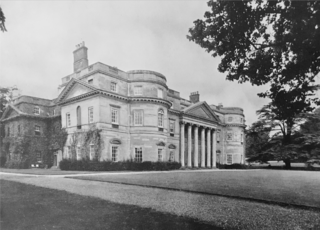
Horton Hall, known locally as Horton House, was a stone-built Georgian stately home, now demolished, located on a 3,764 acre estate stretching across nine parishes on the Northamptonshire and Buckinghamshire borders.
